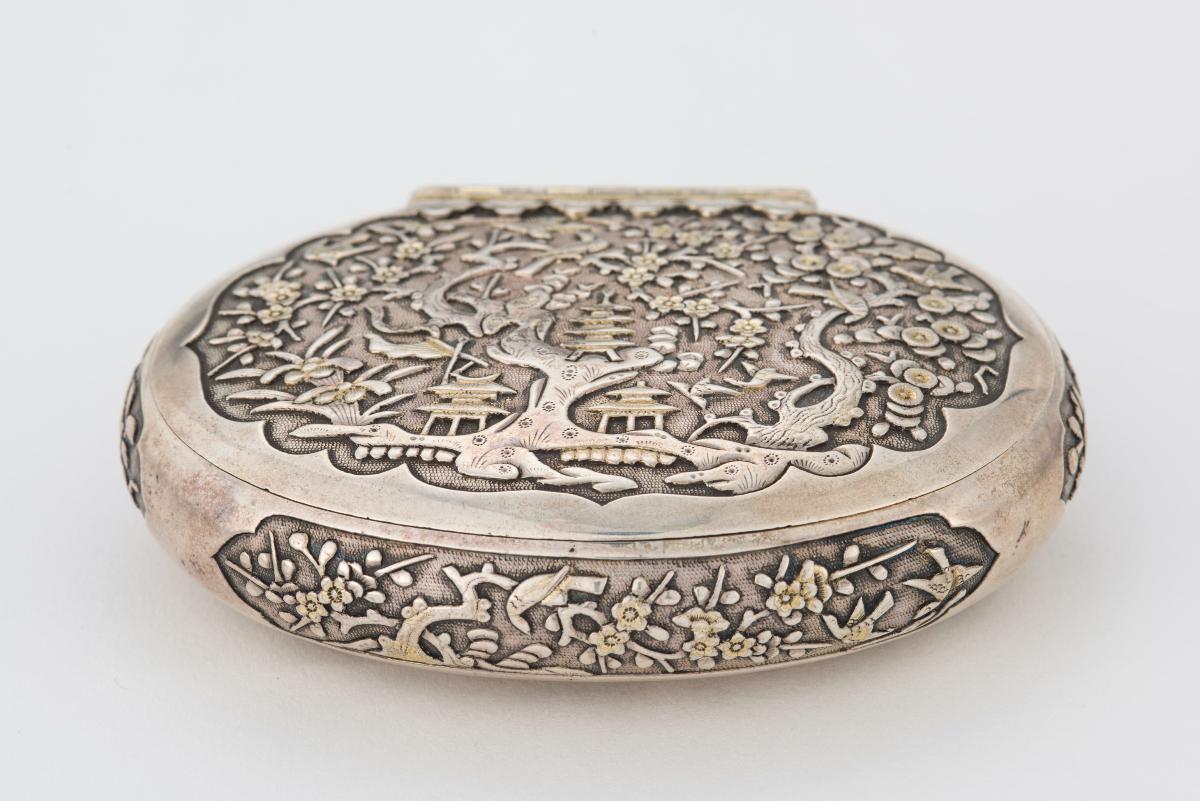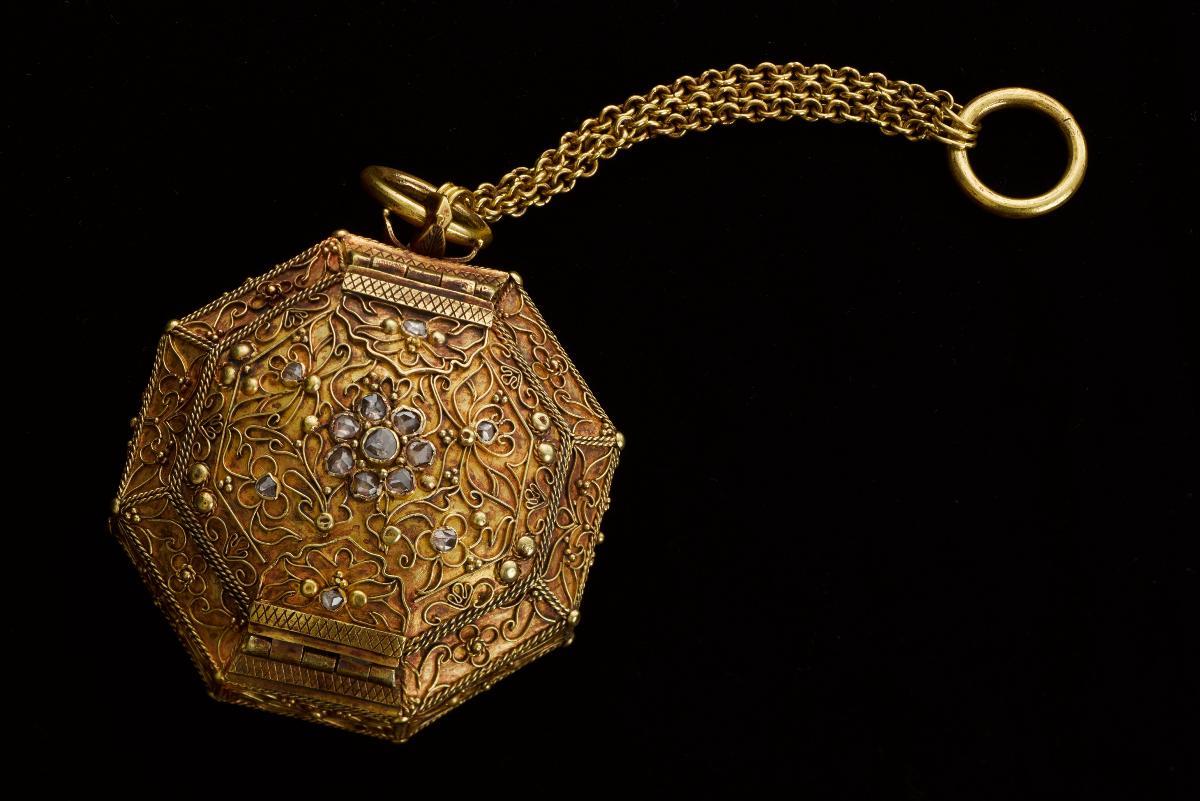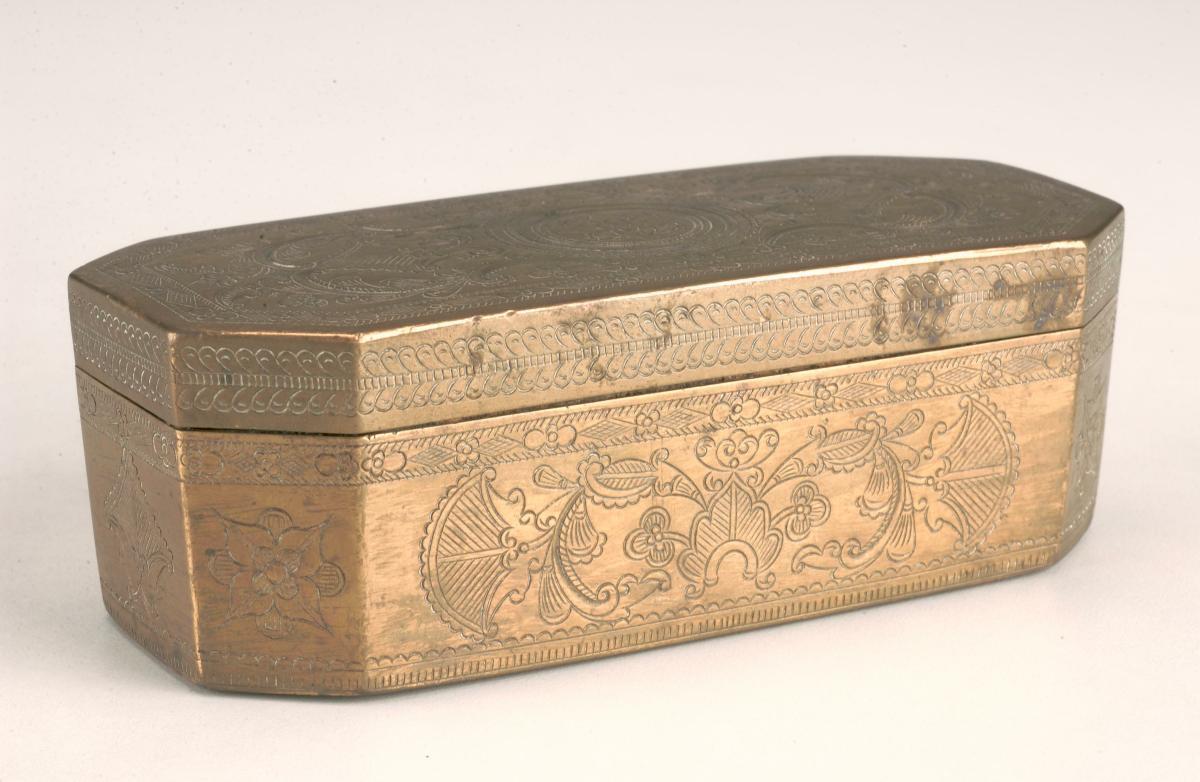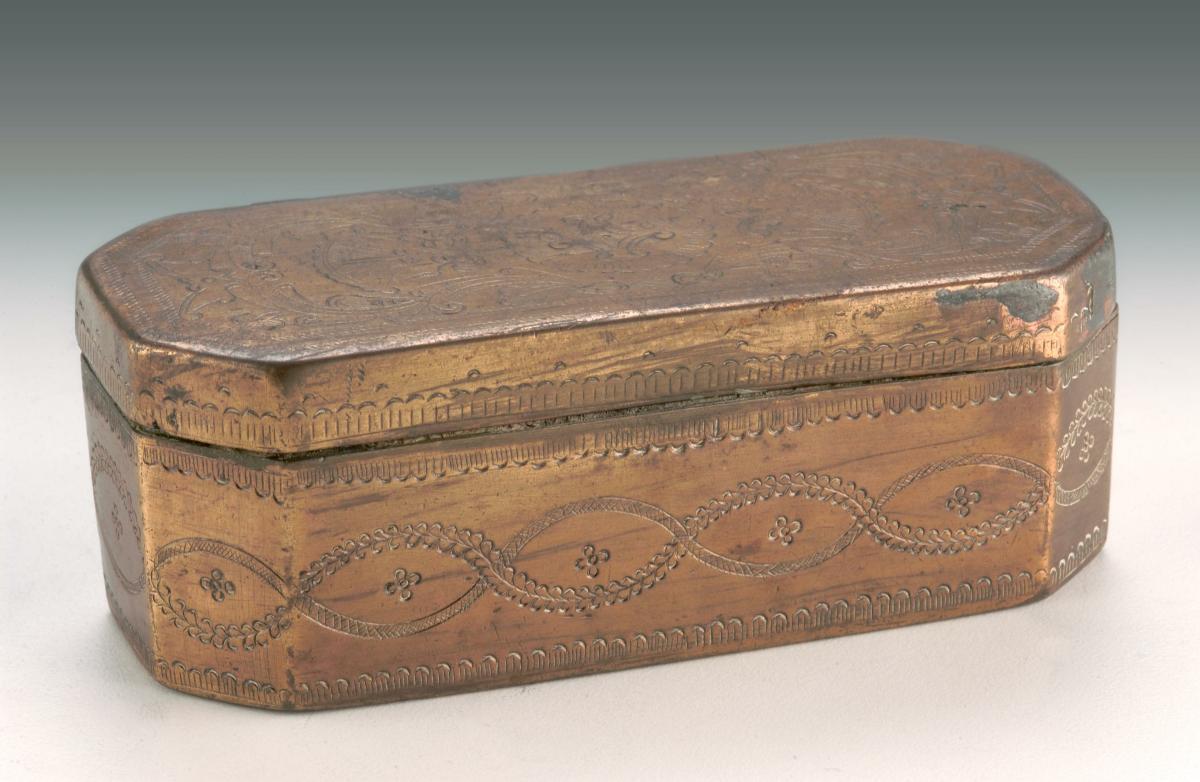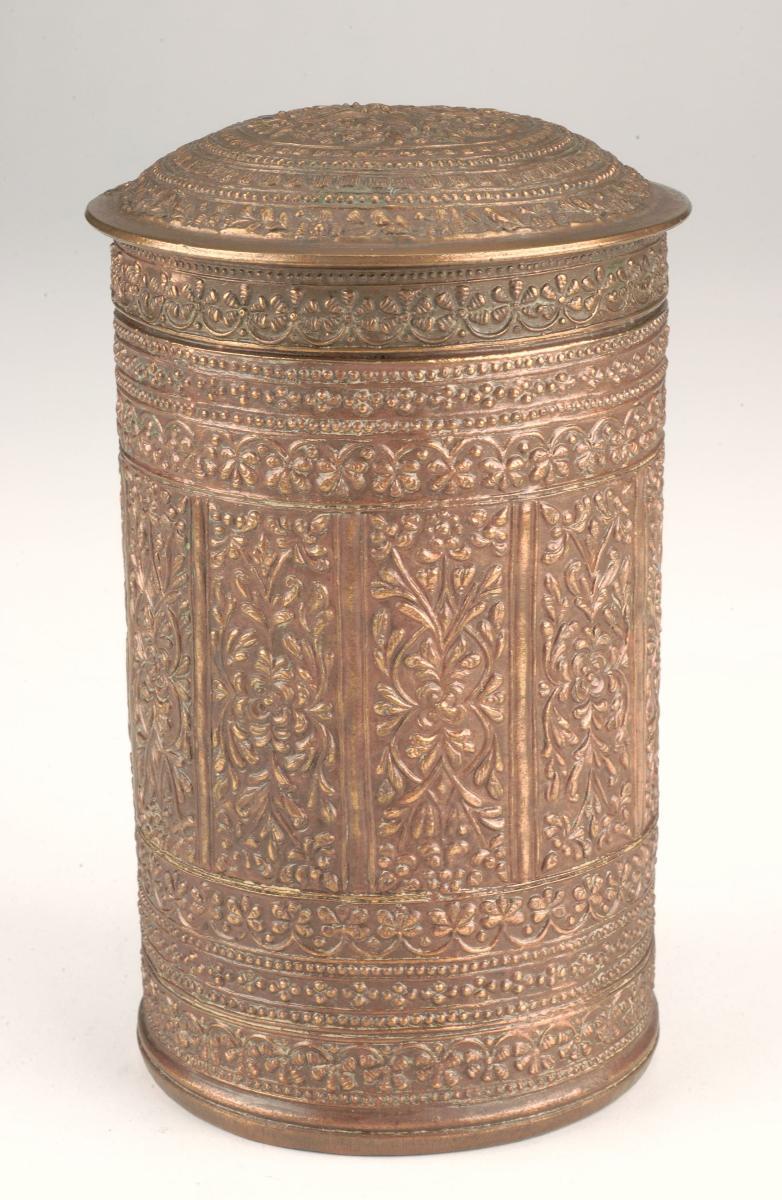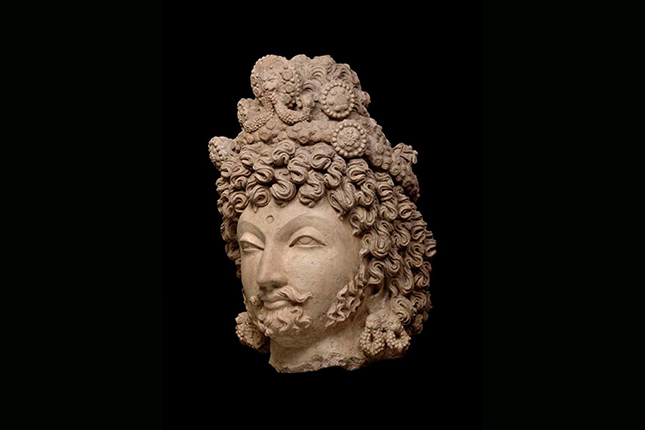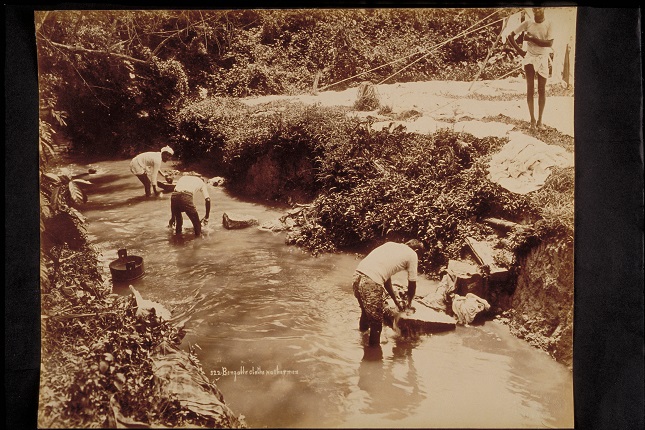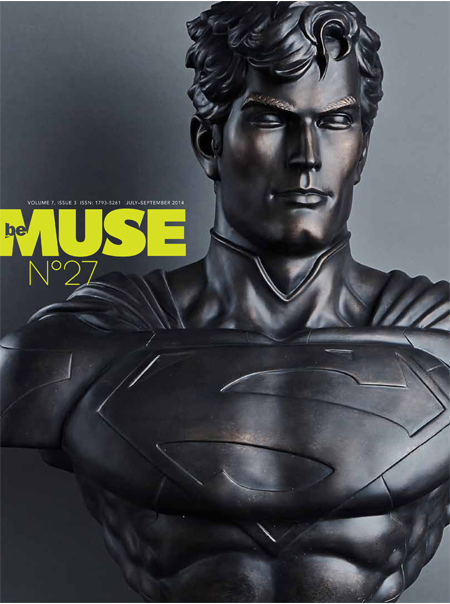This oval tobacco box features lobed medallions on the cover and underside, framing chased landscapes of pagodas, butterflies, and birds amidst flowering prunus trees and peonies. The sides are similarly chased with floral panels. The pagodas and flowers are highlighted with parcel-gilding, and the interior is gilded. It was probably made in China or by Chinese silversmiths in Batavia (Jakarta) for export to the West in the late 19th century, a time when trade between China and Europe had opened up considerably. Boxes such as this were used by wealthy gentlemen as storage containers for tobacco. Tobacco came into general use in Europe in the late 16th century, when it was valued for its narcotic and medicinal properties. By the 1630s it had become a popular social pastime all classes. Wealthy consumers often used silver or silver-gilt boxes, but wood and boxes of other metals were also used.




